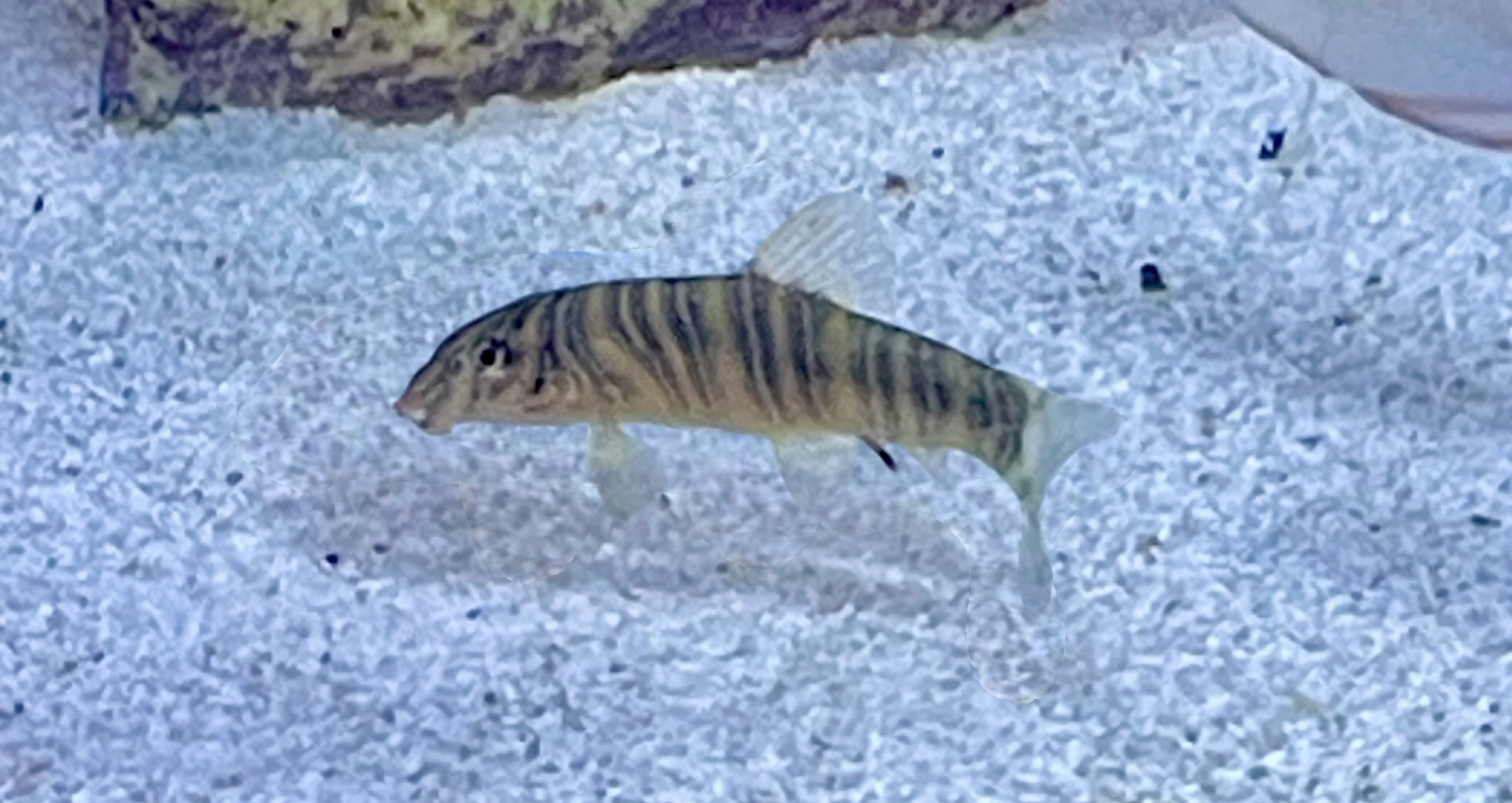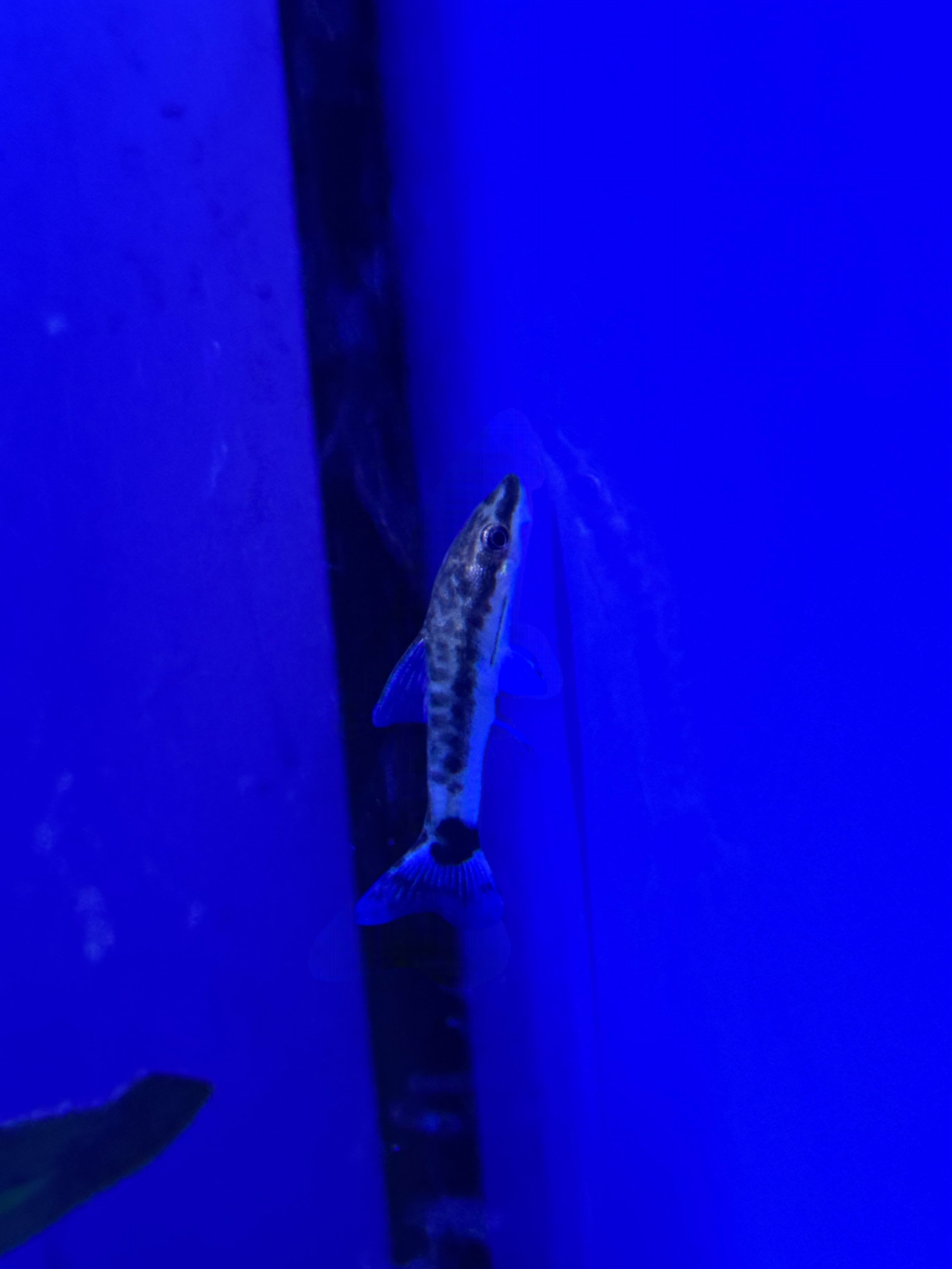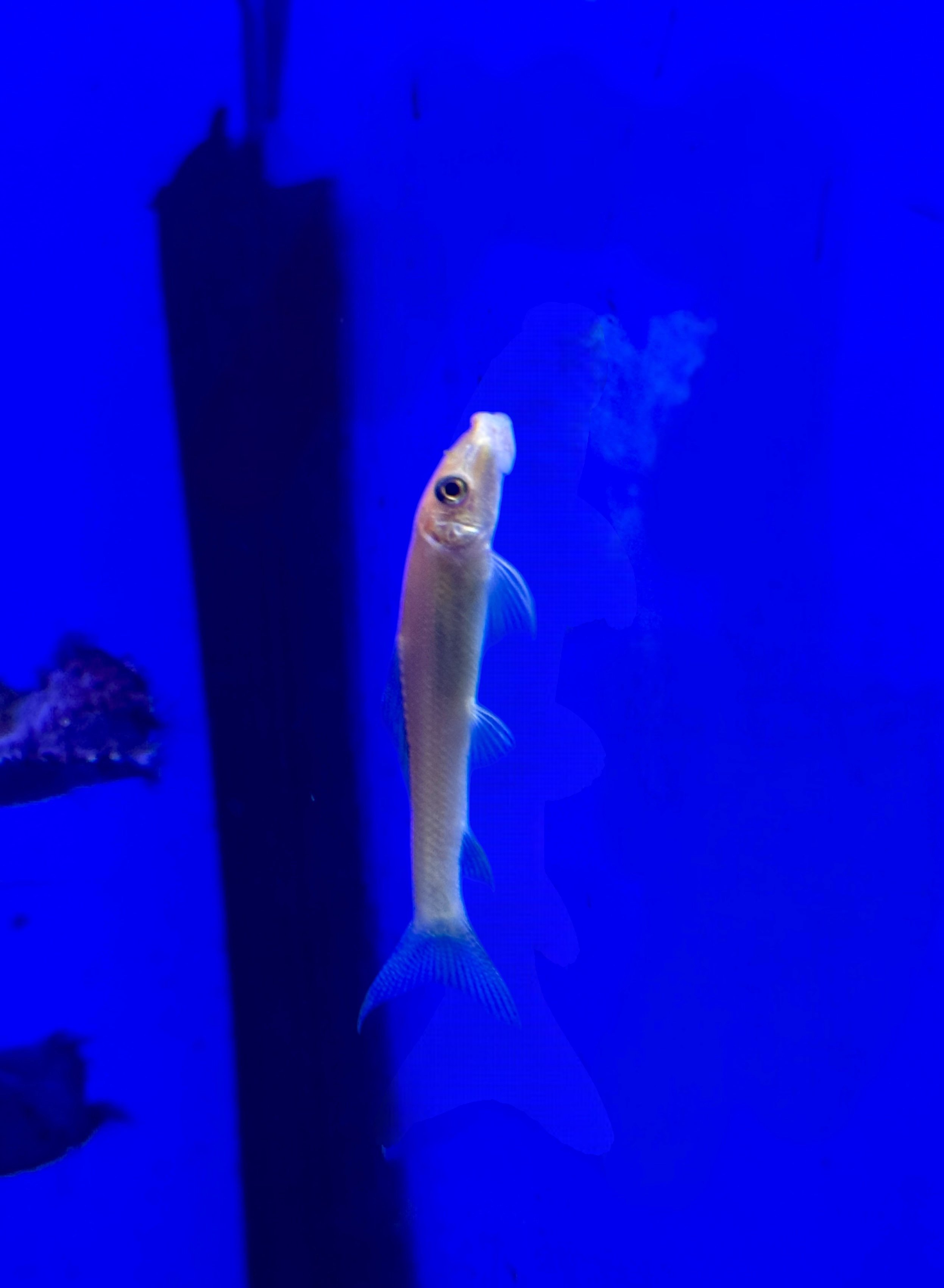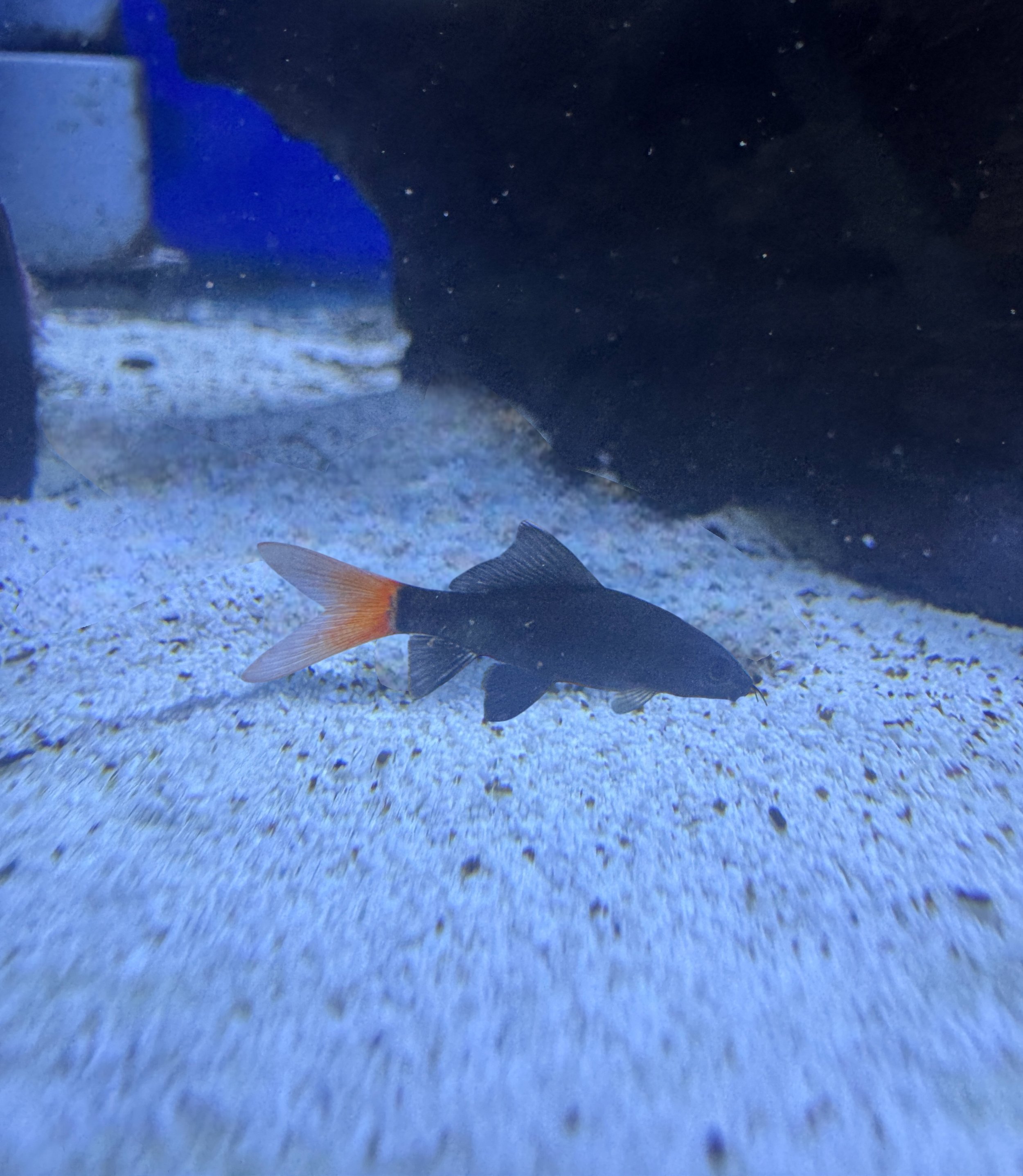Scientific name: Botia striata
Common name: Zebra Loach
Adult Size: 3 to 4 inches (7.6 to 10.2 cm)
Temperature Range: 72 to 79°F (22 to 26°C)
pH Range: 6.5 to 7.5
Compatibility: Generally peaceful, but can be slightly territorial with their own kind
Minimum Tank Size: 120 liters, but a larger tank is better for a group
Originates from: India, specifically the Western Ghats region
Ideal Substrate: Fine sand or small, smooth gravel
Ideal Tank Mates Suggestions: Peaceful fish such as Tetras, Barbs, Danios, and other small, community fish
Fish to avoid: Aggressive or large fish that might see the Zebra Loach as food
Diet: Omnivorous; they will eat a variety of foods including high-quality sinking pellets, live food, and frozen food. They also enjoy algae and can help keep the tank clean.
Breeding: Zebra Loaches are egg layers, but breeding them in captivity can be challenging. They typically scatter their eggs on plants or other surfaces. Providing dense plants or spawning mops can help protect the eggs and fry from being eaten by adult fish.






